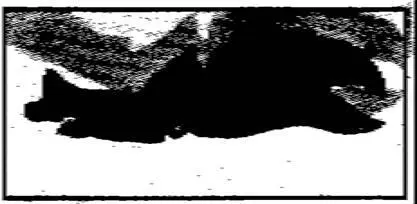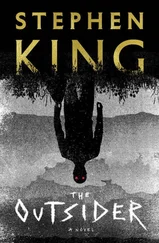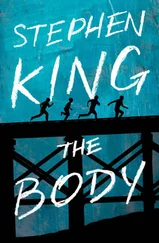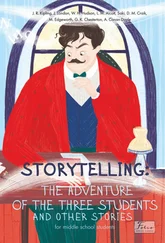To Don Grant, who's taken a chance on these novels, one by one.
The Drawing of the Three is the second volume of a long tale called The Dark Tower, a tale inspired by and to some degree dependent upon Robert Browning's narrative poem "Childe Roland to the Dark Tower Came" (which in its turn owes a debt to King Lear).
The first volume, The Gunslinger, tells how Roland, the last gunslinger of a world which has "moved on," finally catches up with the man in black … a sorcerer he has chased for a very long time―just how long we do not yet know. The man in black turns out to be a fellow named Walter, who falsely claimed the friendship of Roland's father in those days before the world moved on.
Roland's goal is not this half-human creature but the Dark Tower ; the man in black―and, more specifically, what the man in black knows― is his first step on his road to that mysterious place.
Who, exactly, is Roland? What was his world like before it "moved on?" What is the Tower, and why does he pursue it? We have only fragmentary answers. Roland is a gunslinger, a kind of knight, one of those charged with holding a world Roland remembers as being "filled with love and light" as it is; to keep it from moving on.
We know that Roland was forced to an early trial of manhood after discovering that his mother had become the mistress of Marten, a much greater sorcerer than Walter (who, unknown to Roland's father, is Marten's ally); we know Marten has planned Roland's discovery, expecting Roland to fail and to be "sent West"; we know that Roland triumphs in his test.
What else do we know? That the gunslinger's world is not completely unlike our own. Artifacts such as gasoline pumps and certain songs ("Hey Jude," for instance, or the bit of doggerel that begins "Beans, beans, the musical fruit …") have survived; so have customs and rituals oddly like those from our own romanticized view of the American west.
And there is an umbilicus which somehow connects our world to the world of the gunslinger. At a way-station on a long-deserted coach-road in a great and sterile desert, Roland meets a boy named Jake who died in our world. A boy who was, in fact, pushed from a street-corner by the ubiquitous (and iniquitous) man in black. The last thing Jake, who was on his way to school with his book-bag in one hand and his lunch-box in the other, remembers of his world― our world―is being crushed beneath the wheels of a Cadillac … and dying.
Before reaching the man in black, Jake dies again… this time because the gunslinger, faced with the second-most agonizing choice of his life, elects to sacrifice this symbolic son. Given a choice between the Tower and child, possibly between damnation and salvation, Roland chooses the Tower.
"Go, then," Jake tells him before plunging into the abyss. "There are other worlds than these."
The final confrontation between Roland and Walter occurs in a dusty golgotha of decaying bones. The dark man tells Roland's future with a deck of Tarot cards. These cards, showing a man called The Prisoner, a woman called The Lady of Shadows, and a darker shape that is simply Death ("but not for you, gunslinger," the man in black tells him), are prophecies which become the subject of this volume … and Roland's second step on the long and difficult path to the Dark Tower.
The Gunslinger ends with Roland sitting upon the beach of the Western Sea , watching the sunset. The man in black is dead, the gunslinger's own future course unclear; The Drawing of the Three begins on that same beach, less than seven hours later.

The gunslinger came awake from a confused dream which seemed to consist of a single image: that of the Sailor in the Tarot deck from which the man in black had dealt (or purported to deal) the gunslinger's own moaning future.
He drowns, gunslinger, the man in black was saying, and no one throws out the line. The boy Jake.
But this was no nightmare. It was a good dream. It was good because he was the one drowning, and that meant he was not Roland at all but Jake, and he found this a relief because it would be far better to drown as Jake than to live as himself, a man who had, for a cold dream, betrayed a child who had trusted him.
Good, all right, I'll drown, he thought, listening to the roar of the sea. Let me drown. But this was not the sound of the open deeps; it was the grating sound of water with a throatful of stones. Was he the Sailor? If so, why was land so close? And, in fact, was he not on the land? It felt as if―
Freezing cold water doused his boots and ran up his legs to his crotch. His eyes flew open then, and what snapped him out of the dream wasn't his freezing balls, which had suddenly shrunk to what felt like the size of walnuts, nor even the horror to his right, but the thought of his guns … his guns, and even more important, his shells. Wet guns could be quickly disassembled, wiped dry, oiled, wiped dry again, oiled again, and reassembled; wet shells, like wet matches, might or might not ever be usable again.
The horror was a crawling thing which must have been cast up by a previous wave. It dragged a wet, gleaming body laboriously along the sand. It was about four feet long and about four yards to the right. It regarded Roland with bleak eyes on stalks. Its long serrated beak dropped open and it began to make a noise that was weirdly like human speech: plaintive, even desperate questions in an alien tongue. "Did-a-chick? Dum-a-chum? Dad-a-cham? Ded-a-check?"
The gunslinger had seen lobsters. This wasn't one, although lobsters were the only things he had ever seen which this creature even vaguely resembled. It didn't seem afraid of him at all. The gunslinger didn't know if it was dangerous or not. He didn't care about his own mental confusion―his temporary inability to remember where he was or how he had gotten there, if he had actually caught the man in black or if all that had only been a dream. He only knew he had to get away from the water before it could drown his shells.
He heard the grinding, swelling roar of water and looked from the creature (it had stopped and was holding up the claws with which it had been pulling itself along, looking absurdly like a boxer assuming his opening stance, which, Cort had taught them, was called The Honor Stance) to the incoming breaker with its curdle of foam.
It hears the wave, the gunslinger thought. Whatever it is, it's got ears. He tried to get up, but his legs, too numb to feel, buckled under him.
I'm still dreaming, he thought, but even in his current confused state this was a belief much too tempting to really be believed. He tried to get up again, almost made it, then fell back. The wave was breaking. There was no time again. He had to settle for moving in much the same way the creature on his right seemed to move: he dug in with both hands and dragged his butt up the stony shingle, away from the wave.
He didn't progress enough to avoid the wave entirely, but he got far enough for his purposes. The wave buried nothing but his boots. It reached almost to his knees and then retreated. Perhaps the first one didn't go as far as I thought. Perhaps ―
There was a half-moon in the sky. A caul of mist covered it, but it shed enough light for him to see that the holsters were too dark. The guns, at least, had suffered a wetting. It was impossible to tell how bad it had been, or if either the shells currently in the cylinders or those in the crossed gunbelts had also been wetted. Before checking, he had to get away from the water. Had to―
Читать дальше










